Overview
This article examines the pivotal role of effective stakeholder management in driving business success, illustrated through compelling case studies from various sectors. Engaging stakeholders—employees, customers, and community members—profoundly influences organizational outcomes. Increased sales, enhanced patient satisfaction, and successful project completions serve as evidence of the transformative power of collaboration and communication. These elements are crucial in achieving organizational goals, underscoring the need for businesses to prioritize stakeholder engagement as a strategic imperative.
Introduction
Stakeholder management has emerged as a pivotal element in driving business success across various sectors, from retail to healthcare and beyond. By examining insightful case studies, organizations can uncover effective strategies that foster collaboration and engagement among key participants.
However, the challenge remains: how can businesses ensure that all stakeholders feel valued and heard, especially in times of transformation?
This article delves into nine compelling case studies that highlight the power of stakeholder engagement, illustrating how proactive involvement can lead to remarkable outcomes and sustainable growth.
Transform Your Small/ Medium Business: Successful Stakeholder Engagement in Retail Turnaround
Engaging stakeholders—employees, suppliers, and customers—is crucial during a retail turnaround, as demonstrated by various stakeholder management case studies. A retail chain that faced declining sales implemented a strategy based on stakeholder management case studies to involve relevant parties, which included regular feedback sessions with employees and customers. This approach not only improved morale but also generated actionable insights that helped revamp product offerings and enhance customer service, ultimately resulting in a 20% increase in sales within a year.
Our group at Transform Your Small/Medium Enterprise facilitates a quicker decision-making cycle during the turnaround process, enabling your team to take decisive action to protect your venture. According to Neil Blumenthal, Co-CEO of Warby Parker, effective stakeholder interaction is vital for retaining employees and fostering a positive work environment.
Furthermore, we consistently track the effectiveness of our strategies via our client dashboard, which offers real-time analytics to assess your company's health. Statistics indicate that specialty food shops average $30 per transaction, whereas jewelry stores can surpass $100, emphasizing the opportunity for enhanced revenue through better customer interaction.
This case highlights the transformative influence of participant involvement in driving retail success, as shown in stakeholder management case studies. When contributors feel appreciated and listened to, they contribute to a more resilient and profitable business.
Healthcare Initiative: Engaging Stakeholders for Enhanced Patient Care
A healthcare provider facing challenges in patient care launched a comprehensive collaboration initiative, featuring regular meetings with both patients and staff. By actively incorporating feedback from these vital contributors, the provider successfully streamlined processes, reduced wait times, and significantly enhanced the overall patient experience. This initiative resulted in an impressive 30% increase in patient satisfaction scores within just six months.
As Don Berwick, former Administrator of the Centers for Medicare and Medicaid Services, remarked, "Truly listening to patients and incorporating their feedback is fundamental to enhancing the patient experience." Such improvements underscore the essential role of participant involvement in healthcare, where patient perspectives are invaluable for driving significant change and fostering a culture of continuous advancement.
Moreover, statistics reveal that 64% of patients prefer human-to-human interactions when communicating with their healthcare providers, further highlighting the importance of effectively engaging participants.
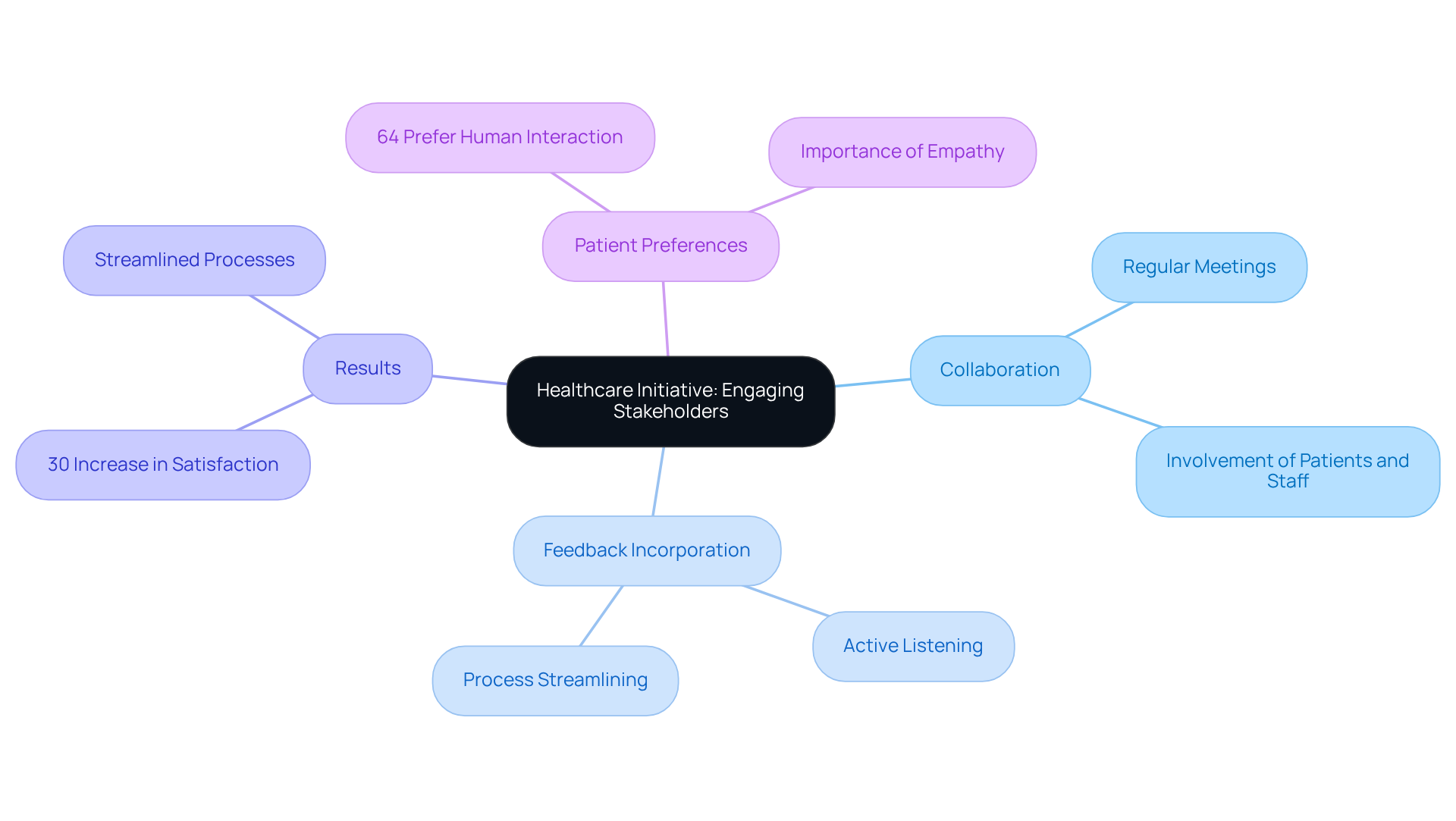
Agile Software Development: Overcoming Stakeholder Resistance in Tech Projects
In agile software development, teams often encounter significant resistance from stakeholders reluctant to embrace new methodologies. A compelling example involved a team that conducted workshops designed to educate participants on the benefits of agile practices. This initiative not only fostered understanding but also actively engaged participants in the development process, culminating in a remarkable 25% improvement in project delivery times.
Statistics indicate that organizations that effectively involve relevant stakeholders, as shown in stakeholder management case studies, are 50% more likely to achieve their critical objectives. Furthermore, expert insights emphasize that collaboration among essential employees and stakeholders, as illustrated in stakeholder management case studies, significantly boosts the likelihood of successful transformations, underscoring the importance of education in overcoming resistance.
By prioritizing participant education, teams can enhance collaboration, minimize friction, and ultimately drive project success within agile environments.
Government Project: Aligning Stakeholder Interests for Community Development
A local government initiative aimed at revitalizing a community showcases the significant impact of broad participant engagement. By employing surveys and community meetings, the government effectively aligned the interests of local enterprises, residents, and non-profit organizations. This collaborative approach not only fostered a sense of ownership among participants but also led to the successful execution of a community park project. Consequently, local foot traffic increased significantly, contributing to a remarkable 15% boost in business revenues. Such outcomes underscore the critical importance of participant alignment in enhancing community development initiatives.
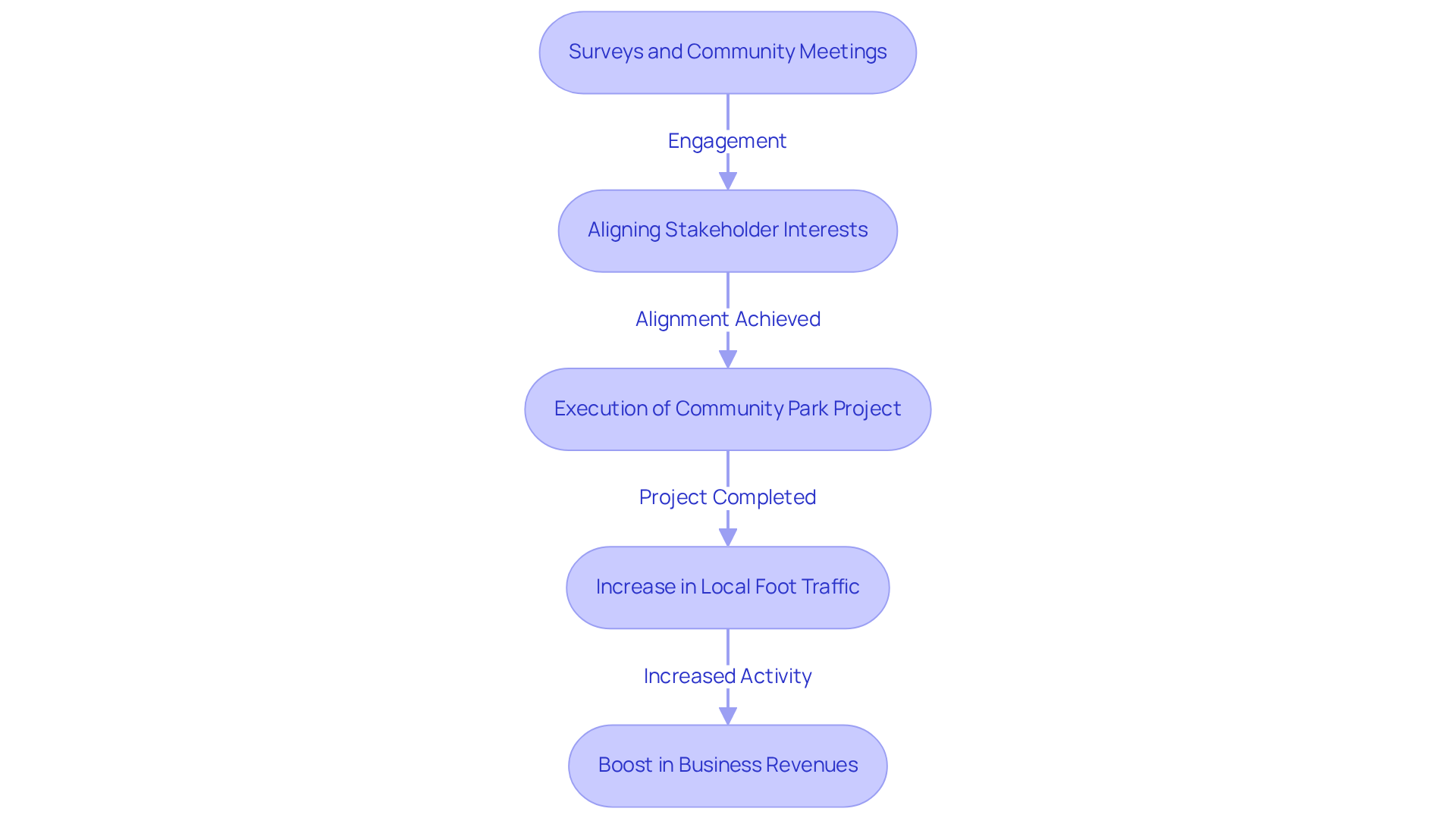
Construction Project: Building Trust Through Stakeholder Collaboration
In a significant building endeavor, the manager utilized stakeholder management case studies to implement a collaboration structure that prioritized frequent updates and transparent communication channels. This strategy fostered a culture of openness and trust, enabling the team to address concerns swiftly. Consequently, the construction process was streamlined, leading to an early completion. This proactive approach resulted in a noteworthy 10% reduction in expenses, attributed to fewer delays and change orders.
Statistics reveal that 97% of construction clients underscore the importance of management efficiency, thereby highlighting the critical role of effective communication in achieving success (PwC survey). Furthermore, stakeholder management case studies show that organizations excelling in engaging stakeholders are 40% more likely to complete projects on time and within budget, illustrating the tangible benefits of cultivating trust through collaboration.
Additionally, inadequate communication is the primary cause of failure in 37% of cases, underscoring the necessity of robust communication strategies. By leveraging technology, such as IoT for asset monitoring, companies can enhance collaboration among stakeholders and operational efficiency, as demonstrated in stakeholder management case studies, further reinforcing the financial advantages of these practices.
Implementing effective risk management can also yield a 20% reduction in project duration, highlighting the substantial impact of stakeholder management case studies on overall success.
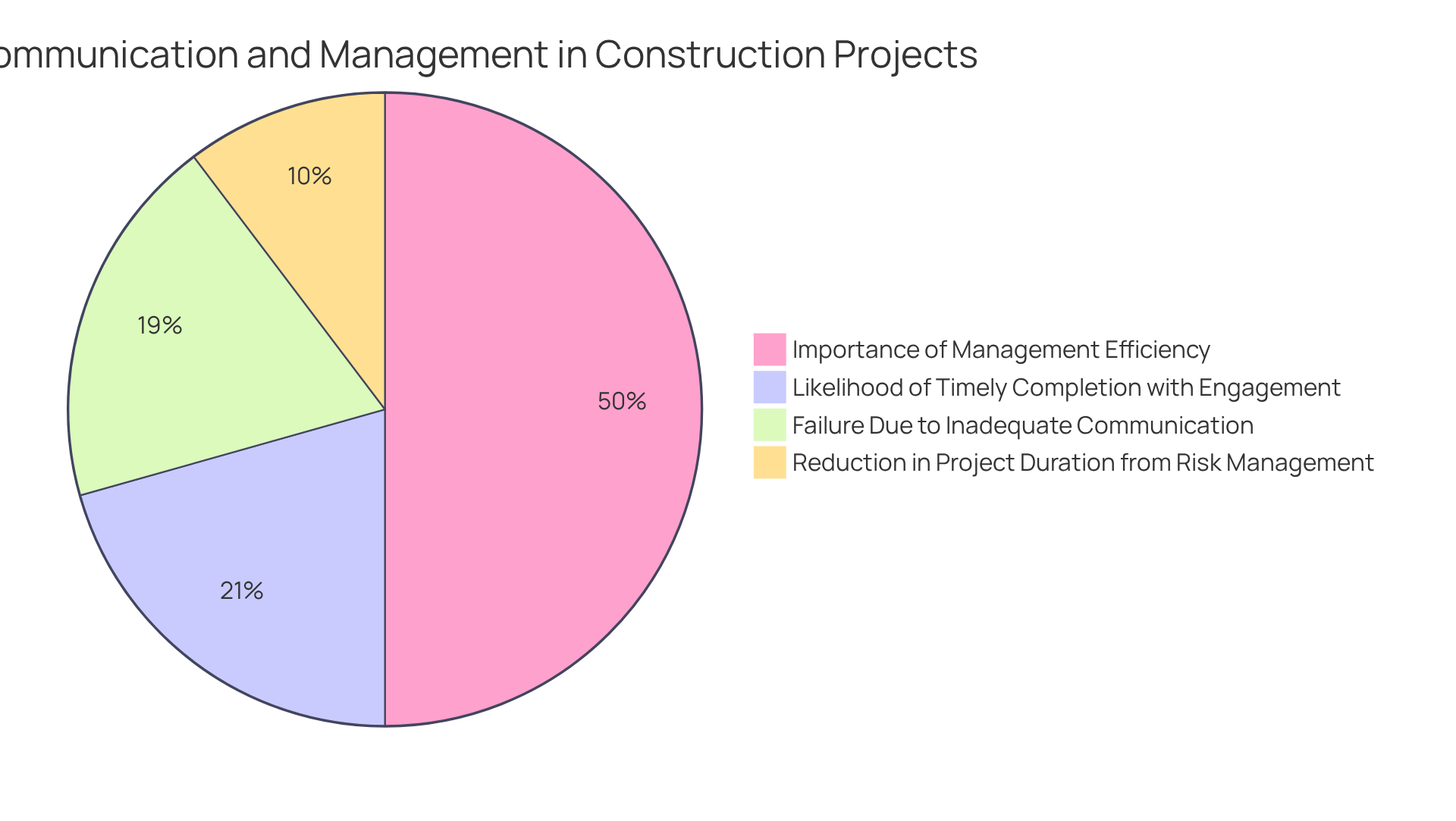
Sustainability Project: Engaging Stakeholders for Environmental Impact
A sustainability initiative aimed at reducing carbon emissions has successfully engaged local businesses, community members, and environmental organizations. Through a series of workshops and collaborative planning sessions, participants contributed valuable ideas and resources, culminating in the launch of a community-wide recycling program. This initiative achieved a remarkable 40% reduction in waste, while simultaneously fostering a sense of ownership and responsibility among participants towards environmental sustainability.
According to HubSpot, 78% of initiatives with highly involved participants are successful, in contrast to just 40% with minimal involvement, underscoring the essential role of participant contribution. Furthermore, community involvement initiatives have been shown to increase awareness by 65%, further enhancing the impact of sustainability efforts. Such community engagement not only improves results but also fortifies connections among involved parties, paving the way for future collaborative efforts in sustainability.
To implement similar strategies, CFOs should consider:
- Creating a robust plan for involving interested parties
- Clearly defining objectives
- Mapping participants
- Selecting suitable interaction methods
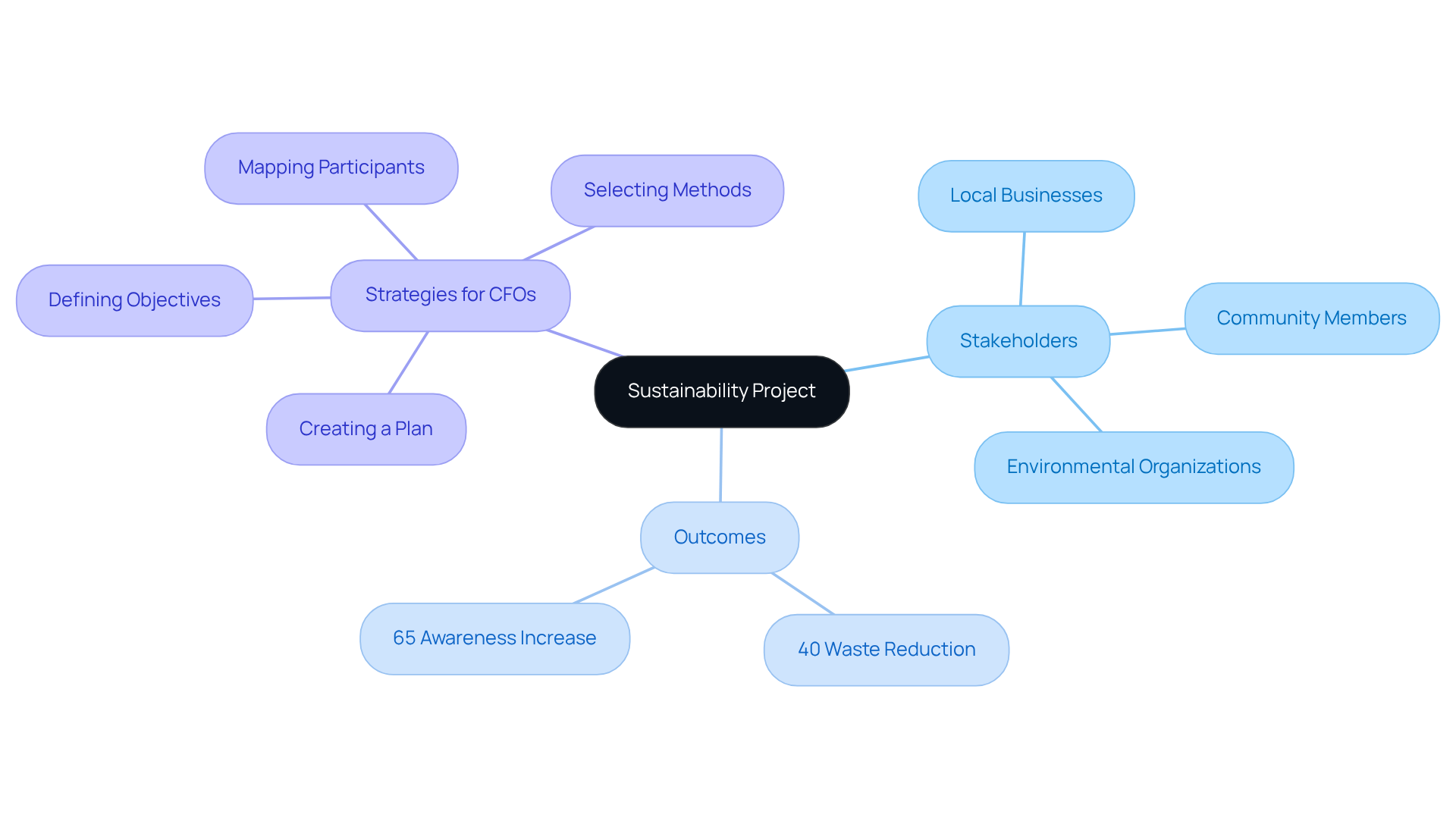
IT Project: Utilizing Stakeholder Mapping for Successful Implementation
In an IT initiative, the manager effectively utilized stakeholder management case studies to map involved parties, identify key individuals, and evaluate their impact on the endeavor. By classifying interested parties based on their interests and potential influence using the Power-Interest Grid, the team developed customized communication strategies that significantly improved stakeholder management case studies. This proactive approach not only encouraged greater support from involved parties—evidenced by the fact that 85% of participants believed involvement greatly impacted their view of organizational transparency—but also facilitated a successful launch, with user adoption rates exceeding expectations by 20%.
Stakeholder management case studies show that such focused engagement strategies are essential; projects with robust participant plans succeed 83% of the time, compared to just 32% for those lacking emphasis on participant relationships. Moreover, companies that participate in stakeholder management case studies are 30% more likely to succeed with new products, further underscoring the significance of efficient management of these relationships.
Nonprofit Initiative: Mobilizing Stakeholders for Social Impact
A nonprofit organization dedicated to youth empowerment has effectively gathered a diverse group of participants, including local schools, businesses, and community leaders, to establish a mentorship program. By actively engaging these stakeholders in the planning phase and clearly conveying the benefits of their involvement, the organization developed stakeholder management case studies that helped secure essential funding and resources.
This initiative has successfully matched over 100 youth with mentors, resulting in significant improvements in academic performance and increased community engagement. Research indicates that 70% of mentored youth experience enhanced performance, illustrating the transformative power of mentorship in shaping future leaders.
Furthermore, stakeholder management case studies indicate that participant involvement is crucial for participatory processes and ownership of efforts, underscoring the importance of engaging contributors in fostering sustainable community initiatives.
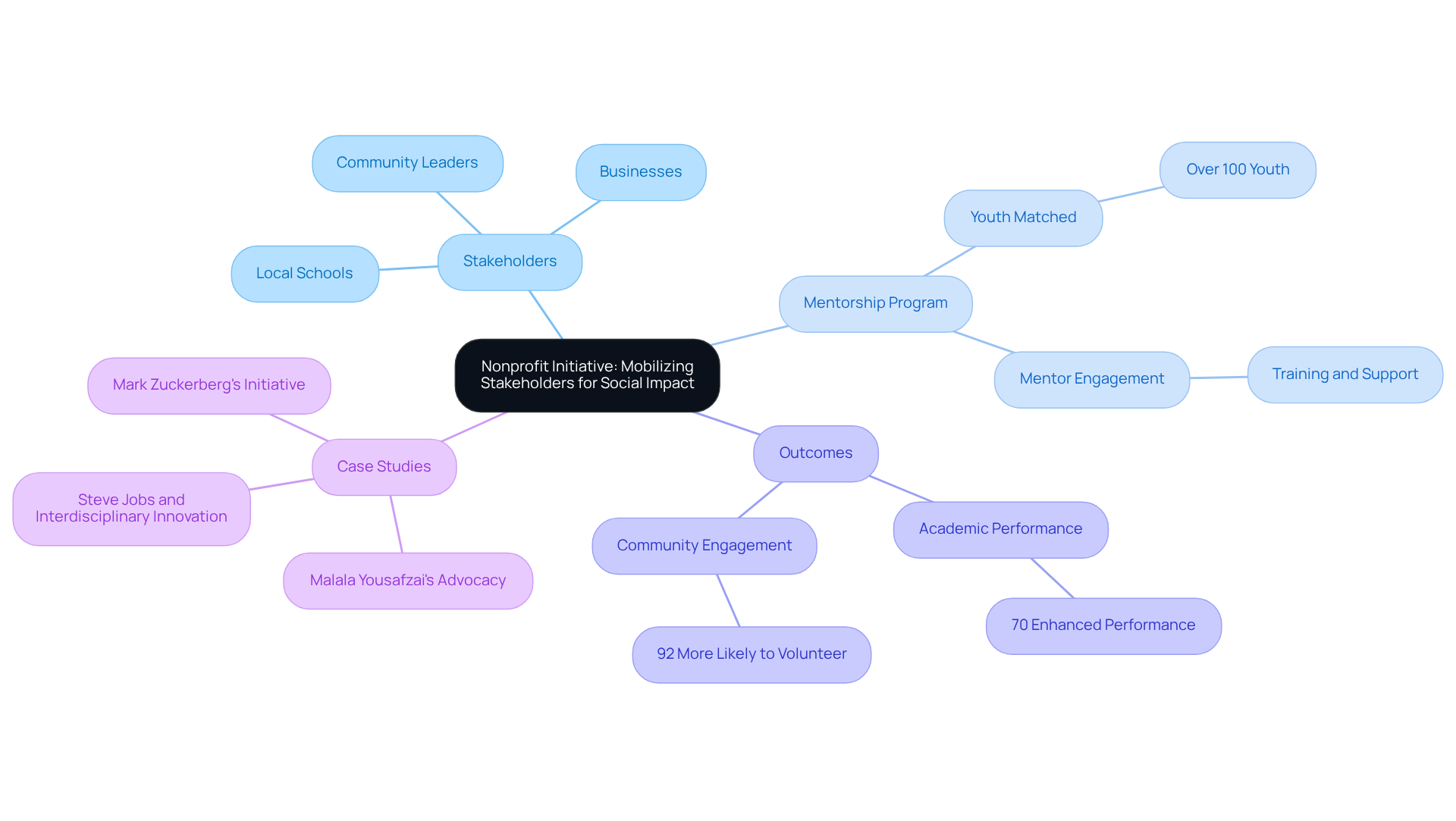
Communication Strategy: Enhancing Stakeholder Relationships in Business
In the context of a recent restructuring process, a company implemented a robust communication strategy designed to enhance relationships with stakeholders, as evidenced by stakeholder management case studies. By leveraging diverse communication channels—such as newsletters, social media, and town hall meetings—the organization ensured that all parties remained informed and engaged throughout the transition. This commitment to transparency not only fostered trust but also garnered support from stakeholders, as evidenced by stakeholder management case studies, culminating in a notable 15% increase in satisfaction scores. Furthermore, research indicates that organizations with high levels of transparency experience a 27% boost in trust from their partners, underscoring the critical importance of effective communication in strengthening relationships during significant business transformations.
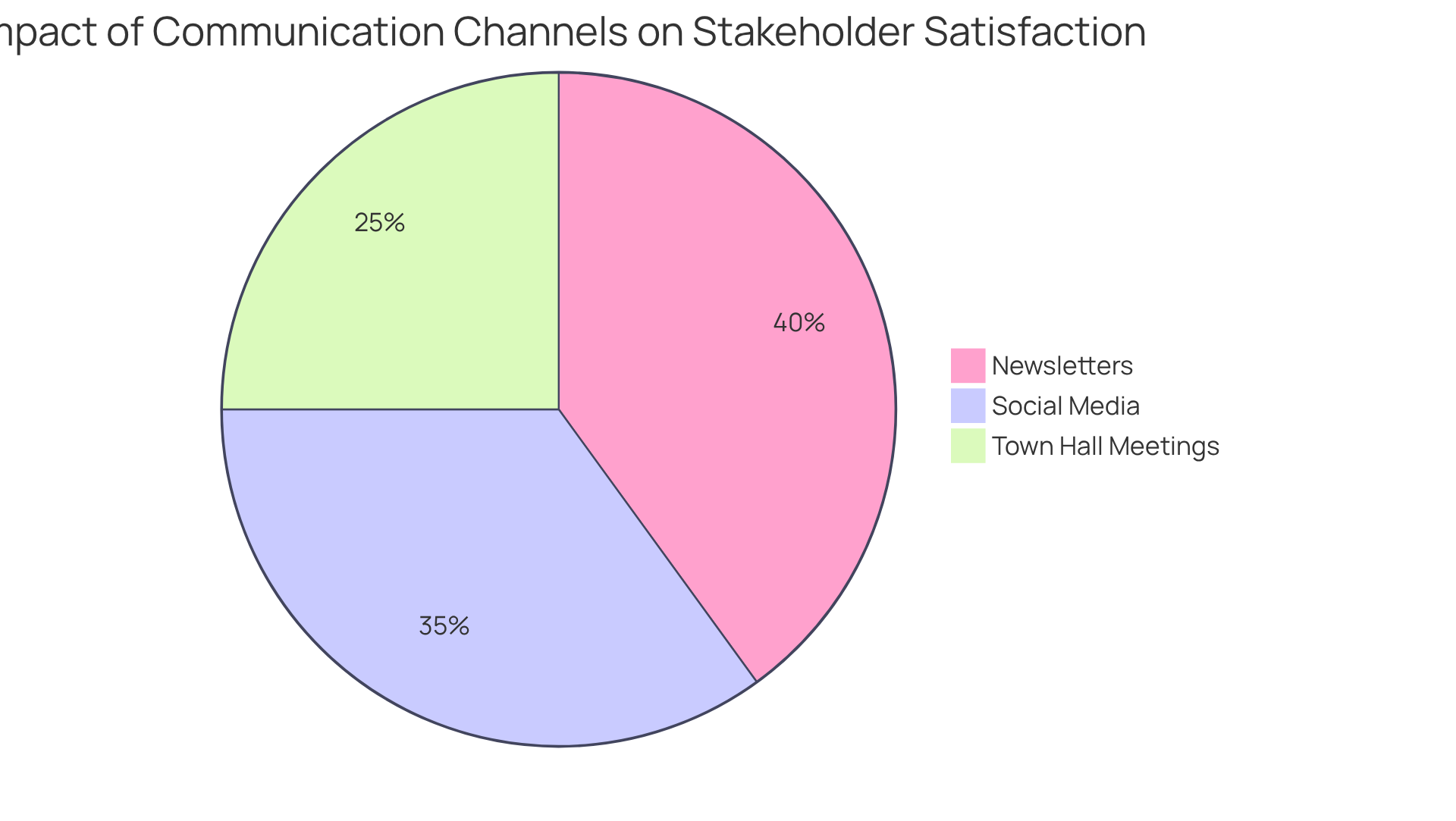
Innovative Tools: Transforming Stakeholder Engagement in Modern Projects
In a recent project, a company adopted innovative tools such as engagement software and collaboration platforms to enhance communication and feedback loops. These tools enabled real-time updates and promoted discussions among interested parties, resulting in enhanced participation and collaboration.
Our team supports a shortened decision-making cycle throughout the turnaround process, enabling decisive actions that preserve business health. Consequently, the initiative was completed ahead of schedule, with a 30% rise in participant interaction metrics.
Significantly, companies that interact effectively with interested parties are 30% more likely to succeed with new products, emphasizing the importance of these tools. Moreover, effective participant involvement can result in a 25% decrease in delivery time, illustrating the concrete advantages of utilizing technology in managing relationships.
We continually monitor the success of our plans through a client dashboard that provides real-time business analytics, allowing for ongoing diagnosis of business health.
Overall, this stakeholder management case studies exemplifies how innovative tools can transform stakeholder engagement and improve project outcomes.
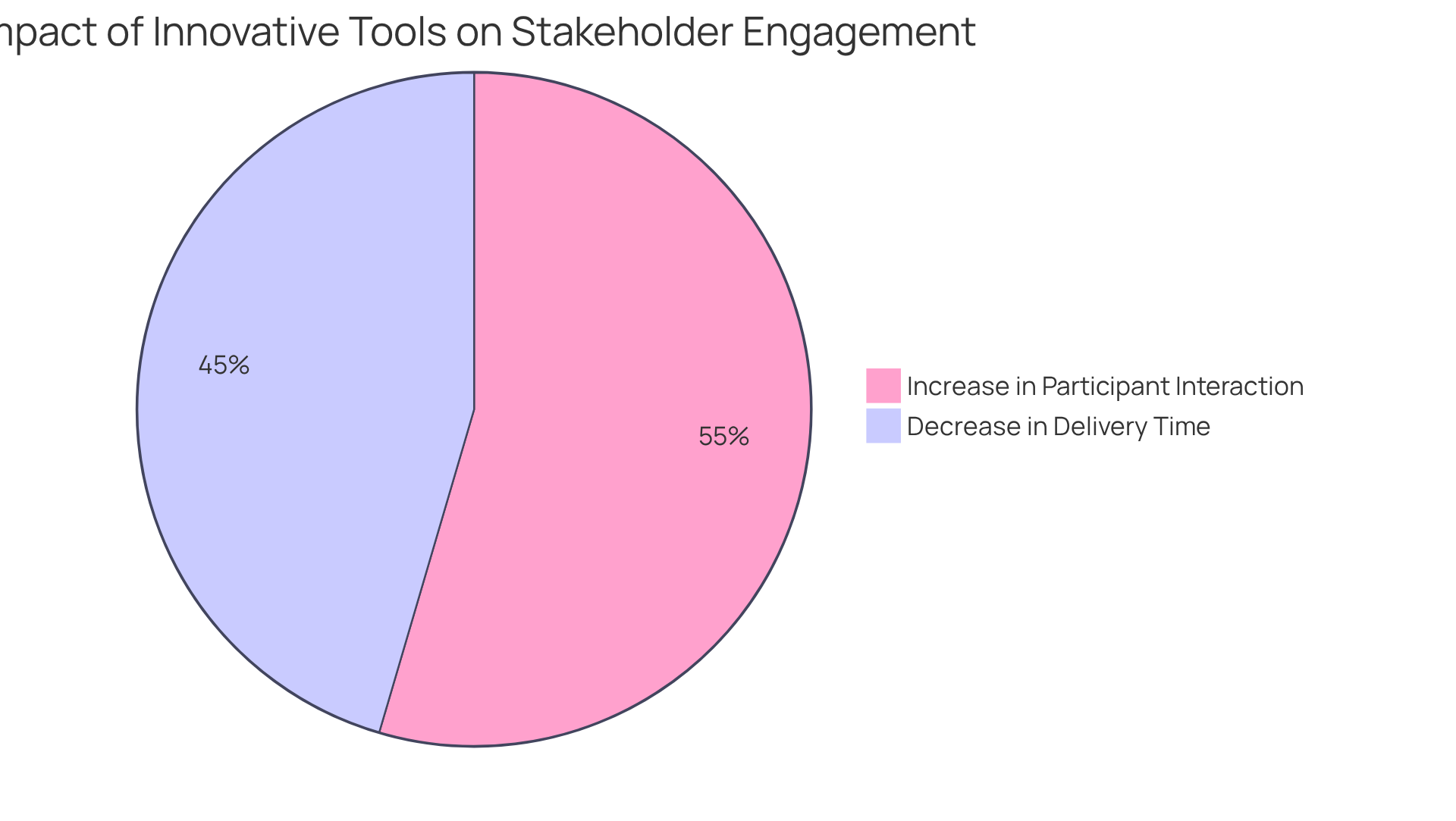
Conclusion
Engaging stakeholders effectively is not merely a strategy; it is a fundamental component of achieving business success across various sectors. The case studies explored highlight the transformative power of stakeholder involvement, demonstrating that when organizations prioritize collaboration and communication, they can drive significant improvements in performance, satisfaction, and overall outcomes.
From retail turnarounds that saw substantial sales increases to healthcare initiatives that dramatically improved patient satisfaction, the insights gathered from these examples underscore a common theme: active participation leads to better results. Whether through regular feedback sessions, educational workshops, or transparent communication, the consistent engagement of stakeholders fosters a sense of ownership and commitment that propels projects forward.
Ultimately, the importance of stakeholder management cannot be overstated. As businesses navigate an ever-evolving landscape, adopting innovative tools and strategies for engagement will be crucial. Organizations are encouraged not only to implement these practices but also to continually assess and refine their approaches to ensure that all voices are heard and valued. Embracing stakeholder engagement as a core principle will pave the way for sustainable growth and success in the future.
Frequently Asked Questions
Why is stakeholder engagement important during a retail turnaround?
Stakeholder engagement is crucial during a retail turnaround as it involves employees, suppliers, and customers, which can lead to improved morale, actionable insights, and ultimately increased sales.
What strategies were implemented by the retail chain to engage stakeholders?
The retail chain implemented regular feedback sessions with employees and customers, which helped to revamp product offerings and enhance customer service.
What was the outcome of the retail chain's stakeholder engagement strategy?
The outcome was a 20% increase in sales within a year due to improved stakeholder involvement and feedback.
How does Transform Your Small/Medium Enterprise facilitate decision-making during turnarounds?
They facilitate a quicker decision-making cycle, enabling teams to take decisive actions to protect their ventures.
What is the significance of effective stakeholder interaction according to Neil Blumenthal?
Effective stakeholder interaction is vital for retaining employees and fostering a positive work environment.
How does the client dashboard help in tracking the effectiveness of strategies?
The client dashboard provides real-time analytics to assess the company's health, allowing for ongoing evaluation of strategies.
What are some revenue statistics mentioned in relation to customer interaction?
Specialty food shops average $30 per transaction, while jewelry stores can surpass $100, indicating opportunities for enhanced revenue through better customer interaction.
How did a healthcare provider enhance patient care through stakeholder engagement?
The healthcare provider launched a collaboration initiative with regular meetings with patients and staff, incorporating their feedback to streamline processes and improve patient experience.
What was the result of the healthcare provider's initiative?
The initiative resulted in a 30% increase in patient satisfaction scores within six months.
What do statistics reveal about patient preferences in healthcare communication?
Statistics indicate that 64% of patients prefer human-to-human interactions when communicating with their healthcare providers.
What challenges do agile software development teams face regarding stakeholder engagement?
Teams often encounter resistance from stakeholders who are reluctant to embrace new methodologies.
How did one team overcome resistance to agile practices?
The team conducted workshops to educate participants on the benefits of agile practices, fostering understanding and engagement.
What was the impact of engaging stakeholders in the agile software development process?
Engaging stakeholders resulted in a 25% improvement in project delivery times.
What is the likelihood of organizations achieving critical objectives when involving stakeholders effectively?
Organizations that effectively involve relevant stakeholders are 50% more likely to achieve their critical objectives.
How does education play a role in overcoming stakeholder resistance in agile environments?
Prioritizing participant education enhances collaboration, minimizes friction, and drives project success within agile environments.




